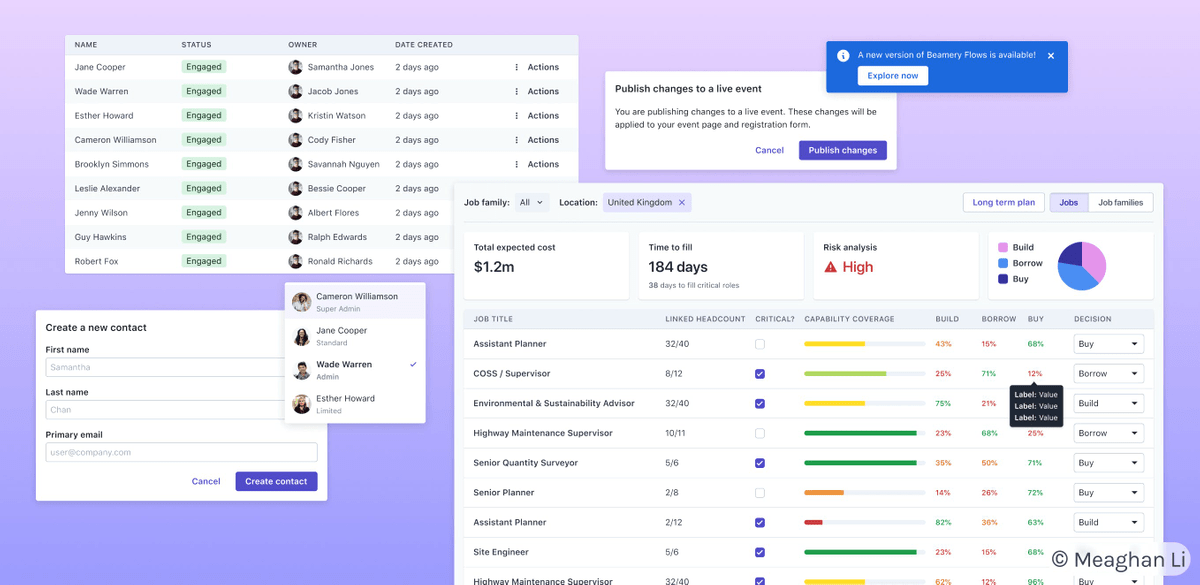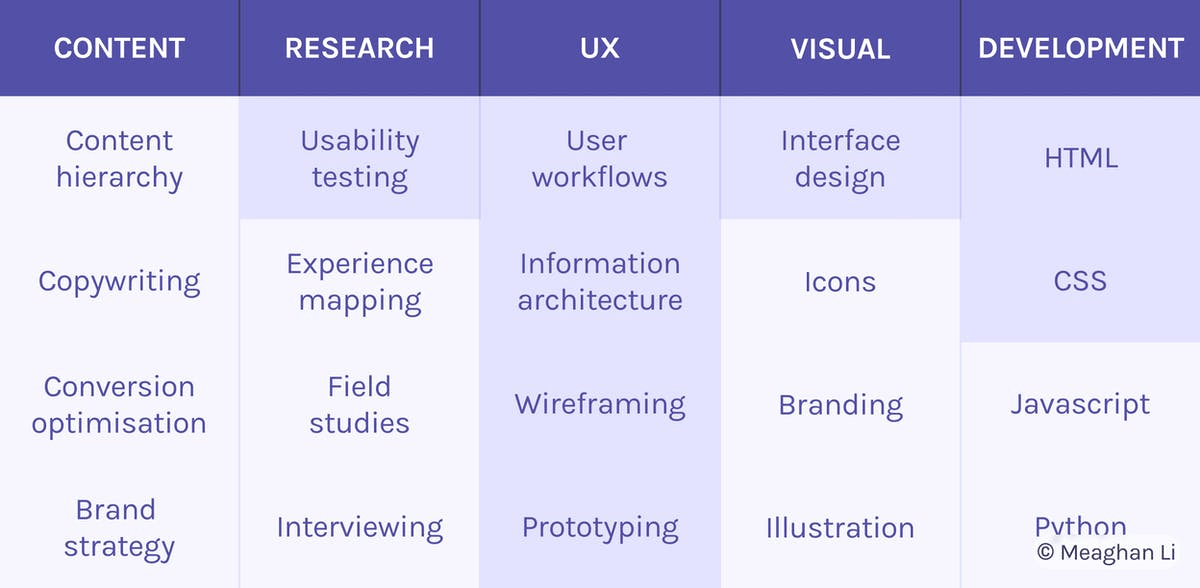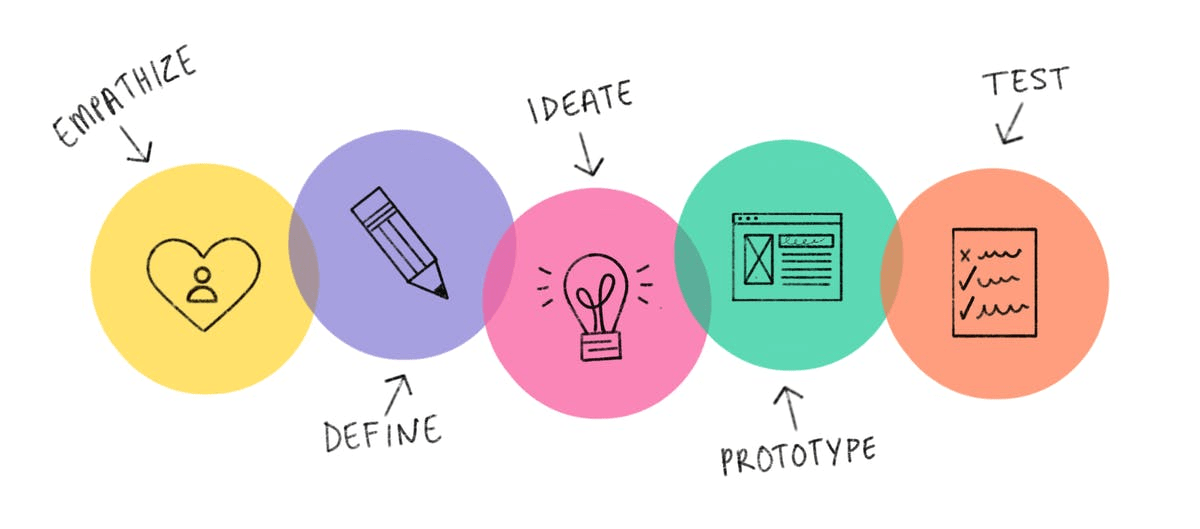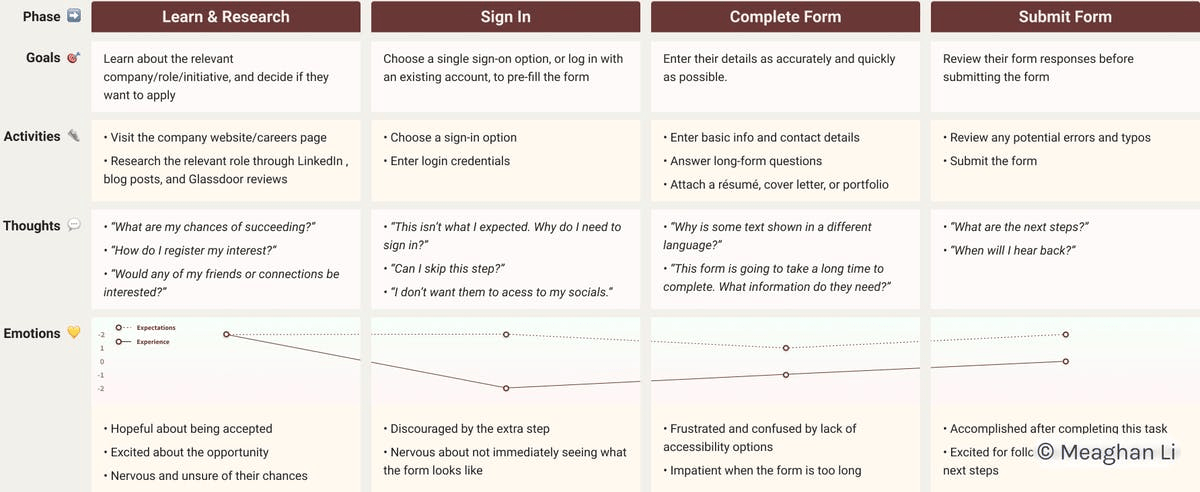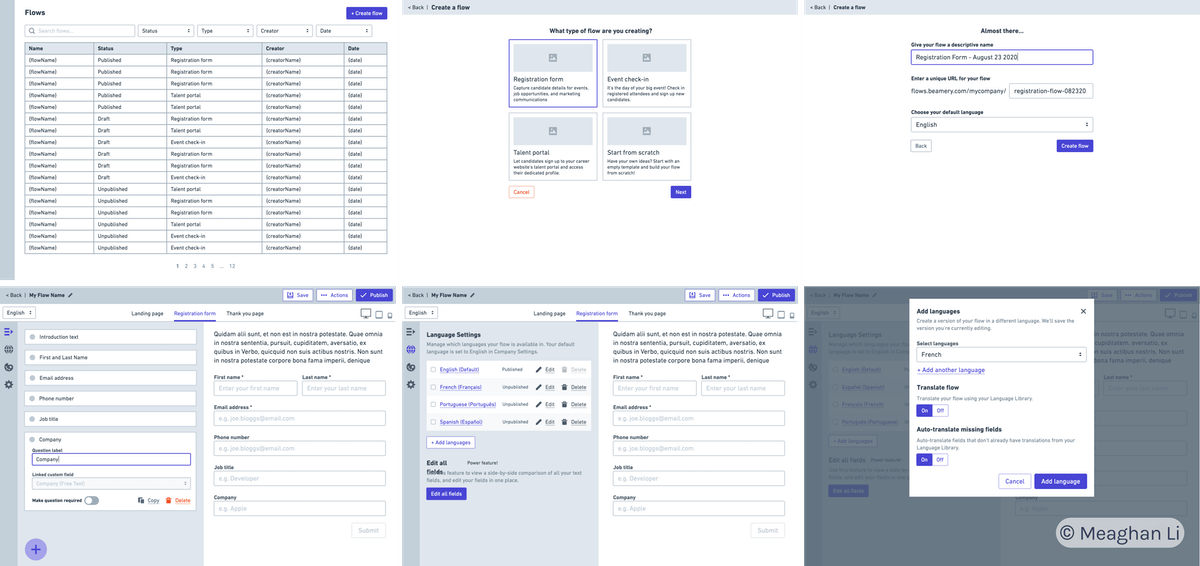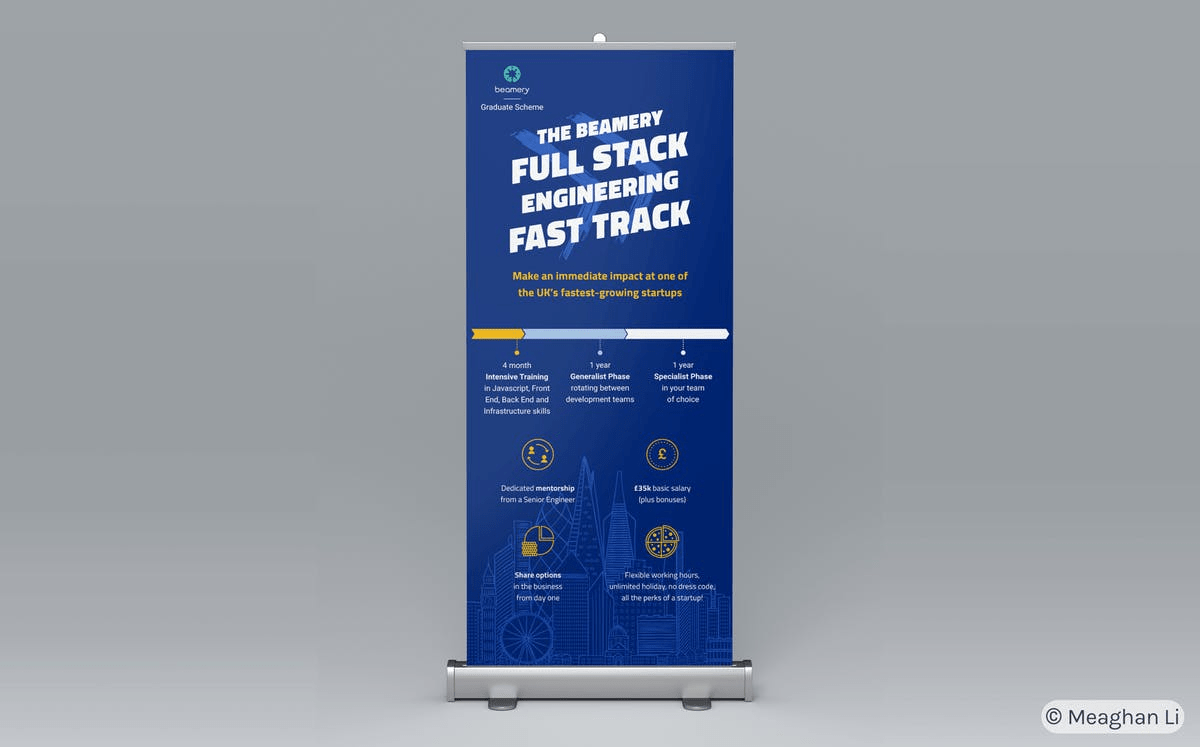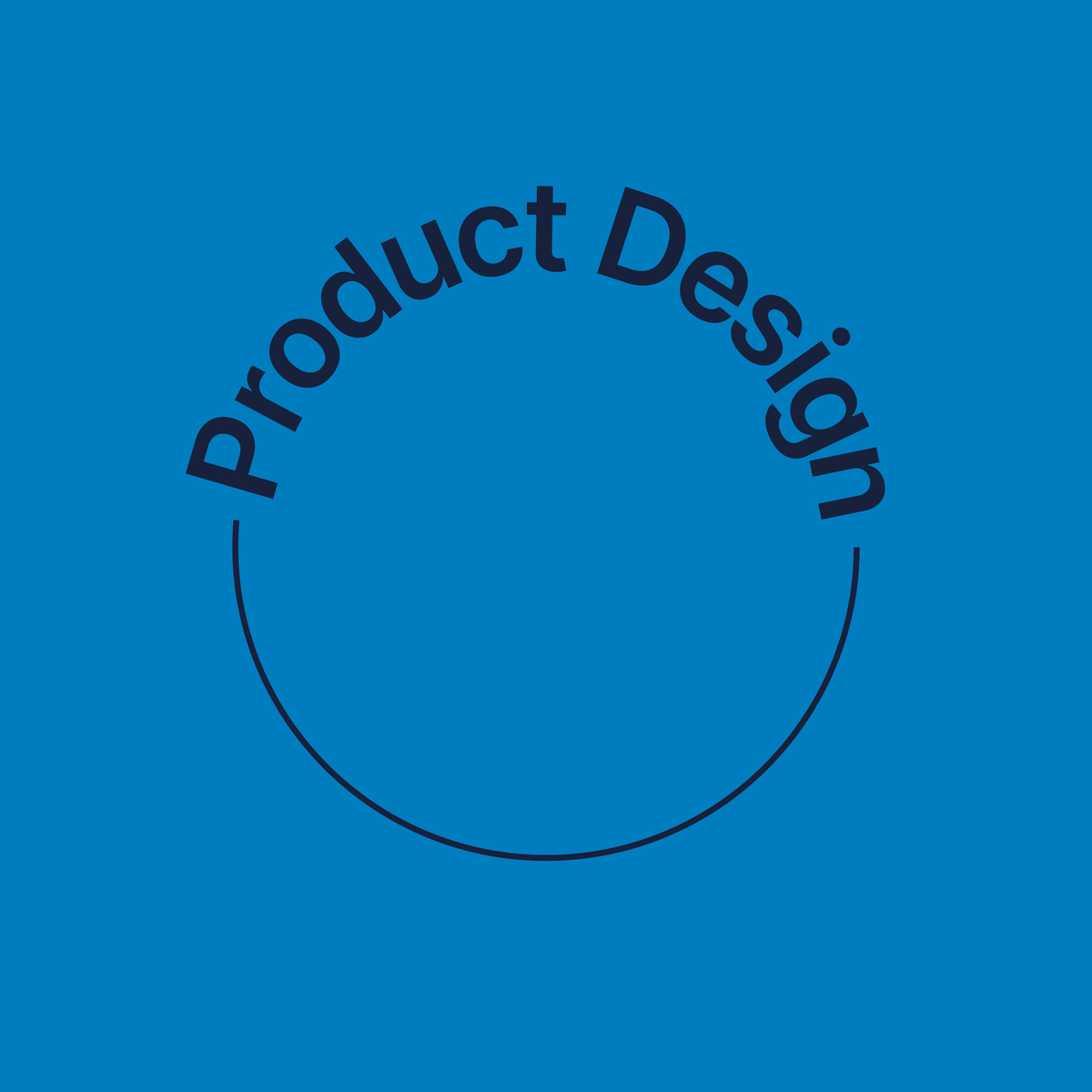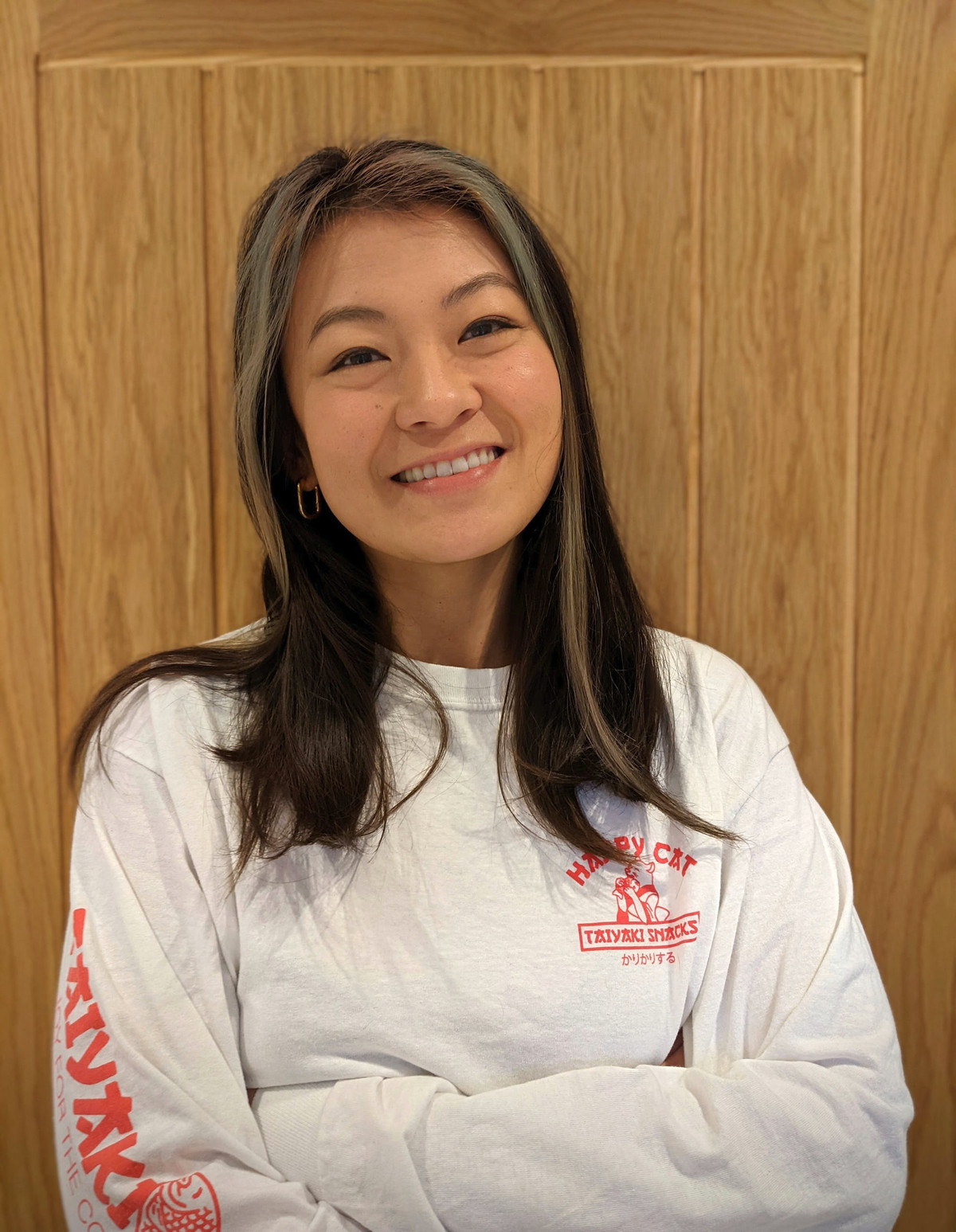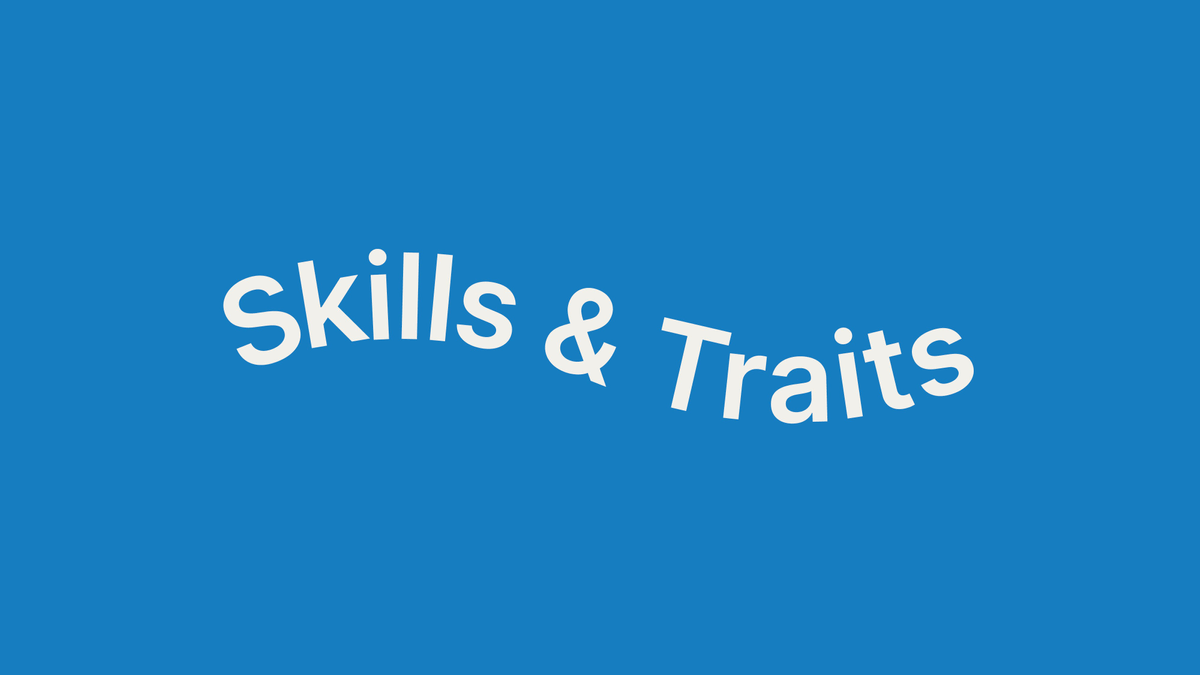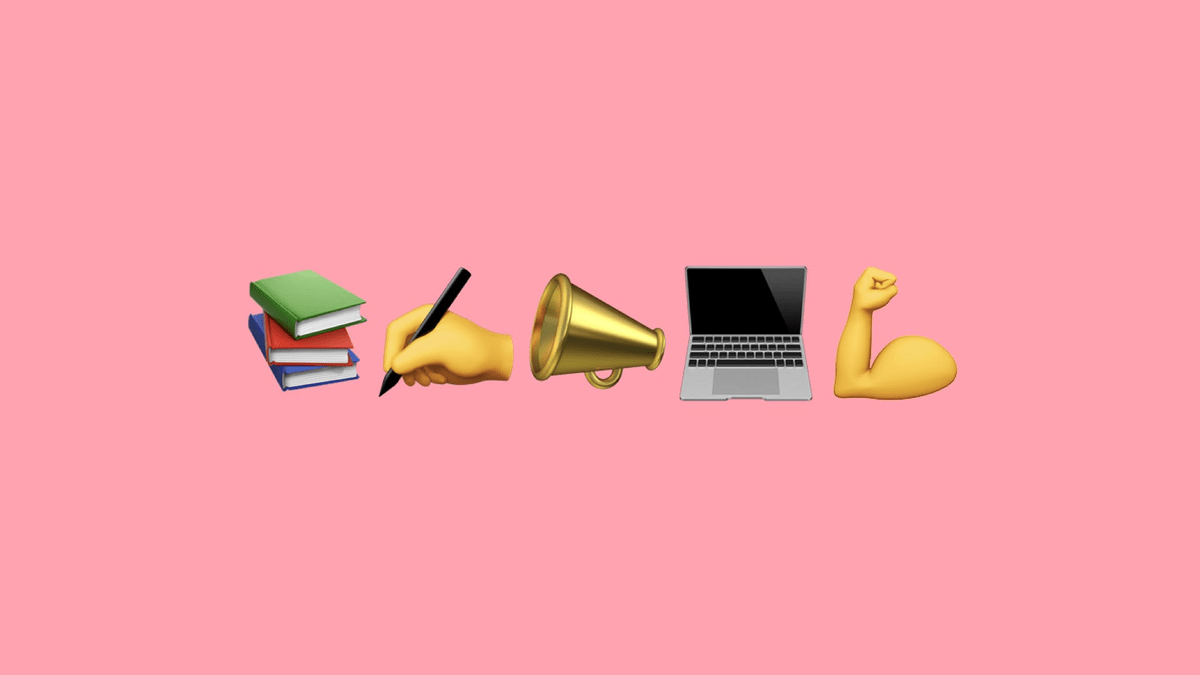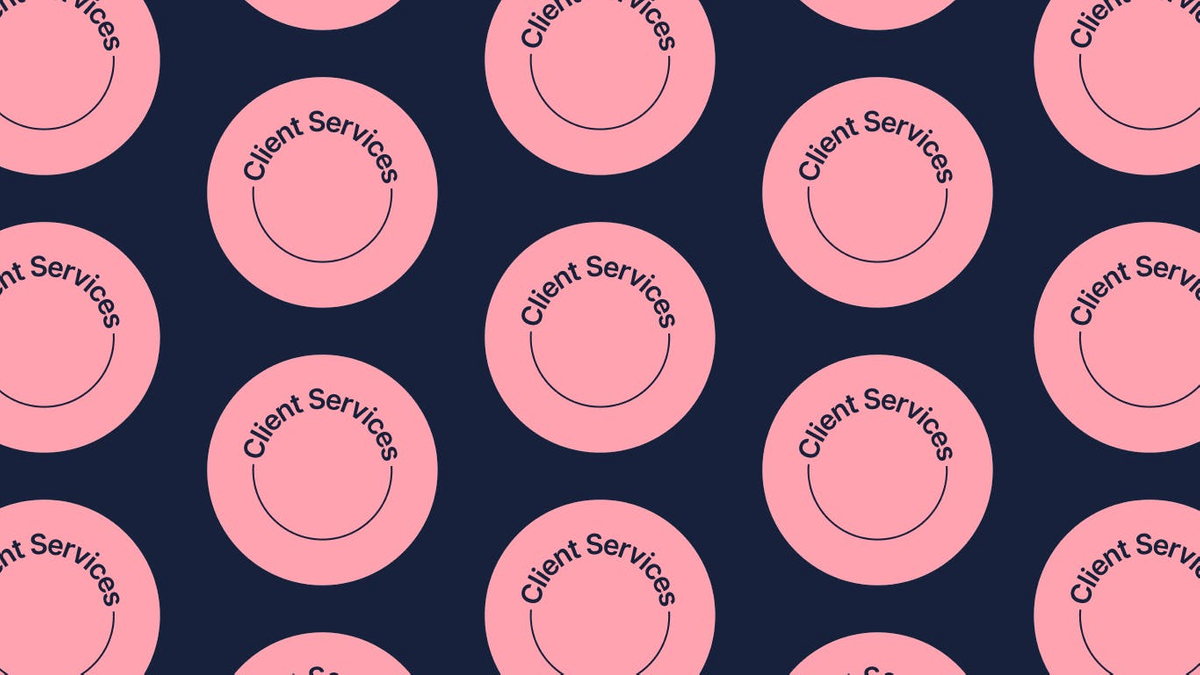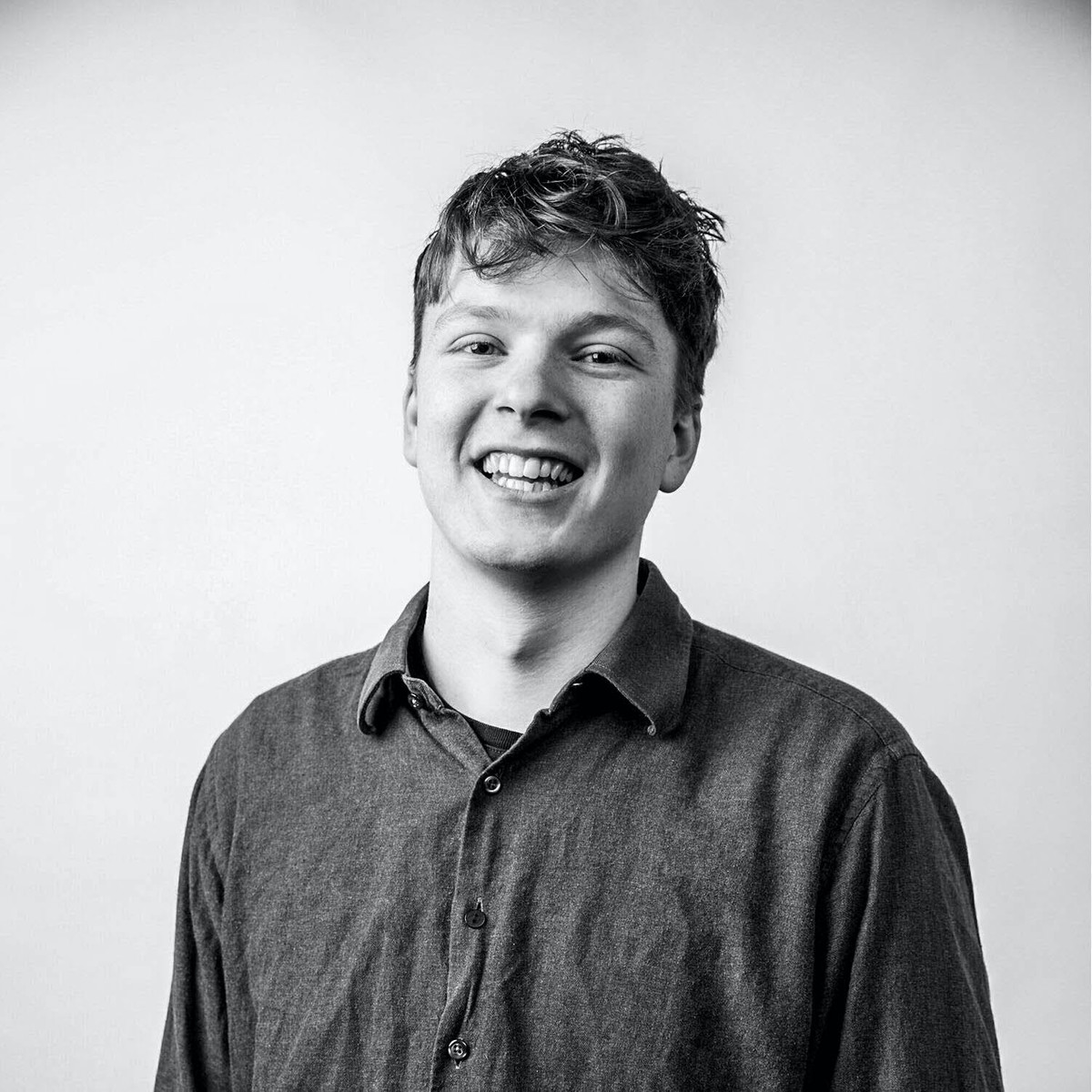What is Product Design?
A guide by Meaghan Li, Product Designer (UX/ UI)
— January 2021
The world of Product Design can be a complex one at first glance, so we spoke to Meaghan Li a London based Product Designer hailing from Auckland, New Zealand, about what it all means. With her background in Graphic Design and studying Public Policy at university, she has had the opportunity to work in tech startups, media agencies, and social justice non-profits. Her experience reflects perfectly her commitment to human-centered design, universal design, designing for justice and social impact.
In this first part of a trio of features she breaks down what product design actually is, including the different roles you'll come into contact with.
When I tell people that I’m a Product Designer, some common responses I receive include: ‘So...what does that mean? What kind of products do you design? Do you design chairs?’ Until recently, Product Design referred to industrial designers who worked with physical objects. Now, it has become the term of choice for digital and technology companies seeking ‘full-stack’ designers with a range of digital skills. In this article, I will dive into what a Product Designer does, what the different concentrations are, and how you can get started in the industry.
What is Product Design?
Product Designers are responsible for designing, improving, and implementing digital tools and experiences that satisfy both user and business needs. They tend to own the full, end-to-end process of designing a digital product, from research and conception to usability testing and implementation. There are two aspects of Product Design to note:
Product Design is fluid
The digital sphere is constantly evolving and it’s composed of people from different disciplines working closely together. As a Product Designer, you get to learn highly-transferable skills that can be applied to many career paths. For example, you could start your career in Visual Design then move into UX once you’re more knowledgeable about user-centered design. Or, you could move from Interaction Design to Design Engineering once you improve your coding chops. It’s also possible to pivot into different fields altogether, since Designers, Engineers, and Product Managers work so closely together.
Product Designers are ‘T-shaped’
Product Designers tend to be generalists who have wide sets of skills along with deep pockets of specialisations. It’s easy to be overwhelmed by the range of skills involved in the role, including user research, information architecture, motion design, and frontend development. However, don’t be overwhelmed and discouraged: you’re not expected to master everything! By focusing on your strengths (what you’re good at), your passions (what you enjoy doing), and your goals (how you want to grow and improve), you can carve your niche and define the shape of your ‘T’.
Product Designers are ‘T-shaped’: they have wide skills with deep specialisations.
What are the different concentrations and roles?
Your academic and professional background can play a large role in defining your strengths and concentrations. For example, if you studied writing, you could be a strong UX writer or content designer. If you’re a visual artist, you might be brilliant at crafting beautiful interfaces and product illustrations. If you have work experience in customer support or social work, you could thrive as an empathy-driven UX researcher.
Regardless of your specialisation, every Product Designer needs to practise design thinking in their role. Design thinking is a problem-solving framework that focuses on people: it mandates that we center the needs of users and make decisions based on data, rather than our own beliefs or assumptions. It is a flexible, non-linear process: you might repeatedly test, iterate, and improve your designs in response to research insights. This highlights a key aspect of Product Design: your ability to synthesise information, communicate decisions, and think critically are as important as your visual design skills.
Design thinking is a flexible, iterative, and non-linear framework for problem-solving.
Source: https://uxdesign.cc/user-experience-is-design-thinking-2428a0a360c2
Let’s explore some of the different roles and concentrations in Product Design:
UX Research
UX Researchers gather data about users, problems, and environments to guide design and product decisions. You would serve as an internal champion for users by helping your team members understand and prioritise user needs. A normal day might include: planning and executing interviews, field studies, and user tests; synthesizing insights; and producing deliverables (such as personas, experience maps, and reports). UX Researchers need to be empathetic, meticulous, and skilled with handling both qualitative and quantitative data.
UX Researchers produce deliverables that guide design and product decisions, such as Customer Journey Maps.
User Experience (UX) Design
UX Design refers to the entire practice of creating experiences that are efficient, functional, and delightful to use. You might collect and synthesise research insights before using them to create experiences that satisfy both user and business needs. In UX Design, asking the right questions is as important coming up with answers: ‘Why are we solving this problem? Who are we impacting? What are the needs and constraints? How might it impact the rest of the user journey?’ A typical day might include mapping workflows, creating wireframes and prototypes, testing your designs, and integrating your findings back into your work.
UX Designers create wireframes to rapidly ideate, validate, and improve potential solutions.
Interaction Design
There’s a large overlap between UX and Interaction Design, but the two aren’t completely synonymous. Interaction Designers focus on how users interact with products and services, in terms of both the overall flow and specific elements (such as copy, motion, and sound). You would be responsible for micro-interactions as well as ensuring that the overall experience is consistent and informative.
User Interface (UI) Design
UI Designers craft interfaces that help users accomplish tasks with minimal friction and maximal delight. You would skillfully manipulate elements like typography, colour, motion, and content to drive user actions and support the overall product goal. The best UI Designers make ‘invisible’ interfaces, in the sense that they create such simple, intuitive, and functional product experiences that you won’t even notice that you’re using it.
UI Designers manipulate typography, colour, space, and depth to create interfaces that help users reach their goals.
Visual Design
Visual Designers engage, excite, and inspire users through imagery, content, and branding. Unlike UI Designers, Visual Designers don’t solely focus on creating interactive interfaces. You could be tasked with designing web pages, illustrations, and branding. Successful Visual Designers need to be creative, proficient in several design tools, and skilled at communicating decisions behind their work. To set yourself apart, consider learning skills in motion design, illustration, data visualisation, and 3D design.
Visual Designers create print, digital, and environmental designs that inspire action and amplify brand messages.
UX Writing
UX Writers shape product experiences by crafting copy to guide and support users. As a skilled wordsmith, you would set the tone for users while creating a cohesive experience across the entire product. Like interface design, great UX writing can be hard to notice when it is clear, concise, and functional.
See our latest posts
